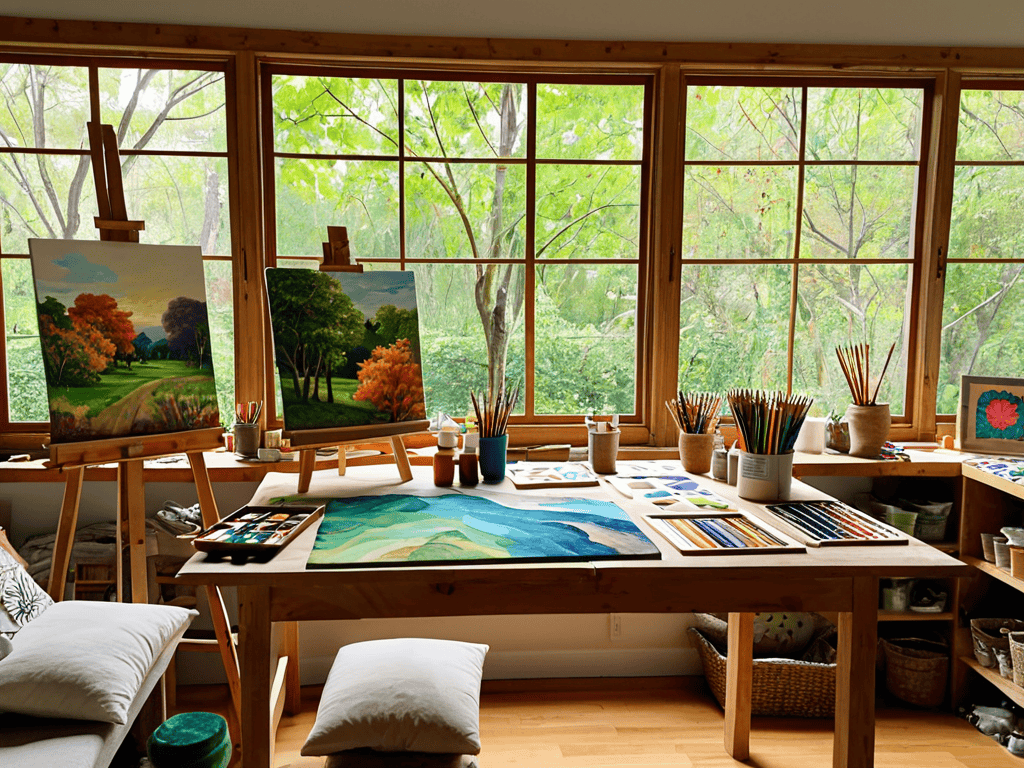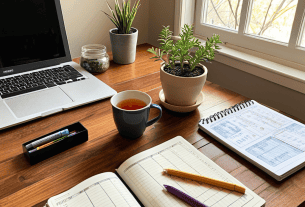As I sat amidst the vibrant colors of my art studio, surrounded by the tranquility of nature, I realized that embracing creativity is not just about producing beautiful art, but about tapping into our inner selves. I’ve often heard people say that they’re not artistic, that they can’t draw or paint, but I believe this is a misconception about a guide to using art therapy for self-expression. The truth is, art therapy is not about creating a masterpiece, but about using the creative process to unlock our emotions and gain a deeper understanding of ourselves.
In this article, I’ll share my personal journey with art therapy and provide you with practical advice on how to use it as a tool for self-discovery. You’ll learn how to silence your inner critic, embrace your creativity, and use art to process your emotions and gain a fresh perspective on life. Whether you’re looking to reduce stress, build confidence, or simply explore your creative side, this guide to using art therapy for self-expression will offer you a step-by-step approach to getting started and making the most out of this powerful practice.
Table of Contents
- Guide Overview: What You'll Need
- Step-by-Step Instructions
- A Guide to Art Therapy
- Unlocking the Power of Art Therapy: 5 Essential Tips for Authentic Self-Expression
- Embracing Art Therapy: 3 Key Takeaways for Mindful Expression
- Embracing Authenticity
- Embracing the Healing Power of Art Therapy
- Frequently Asked Questions
Guide Overview: What You'll Need
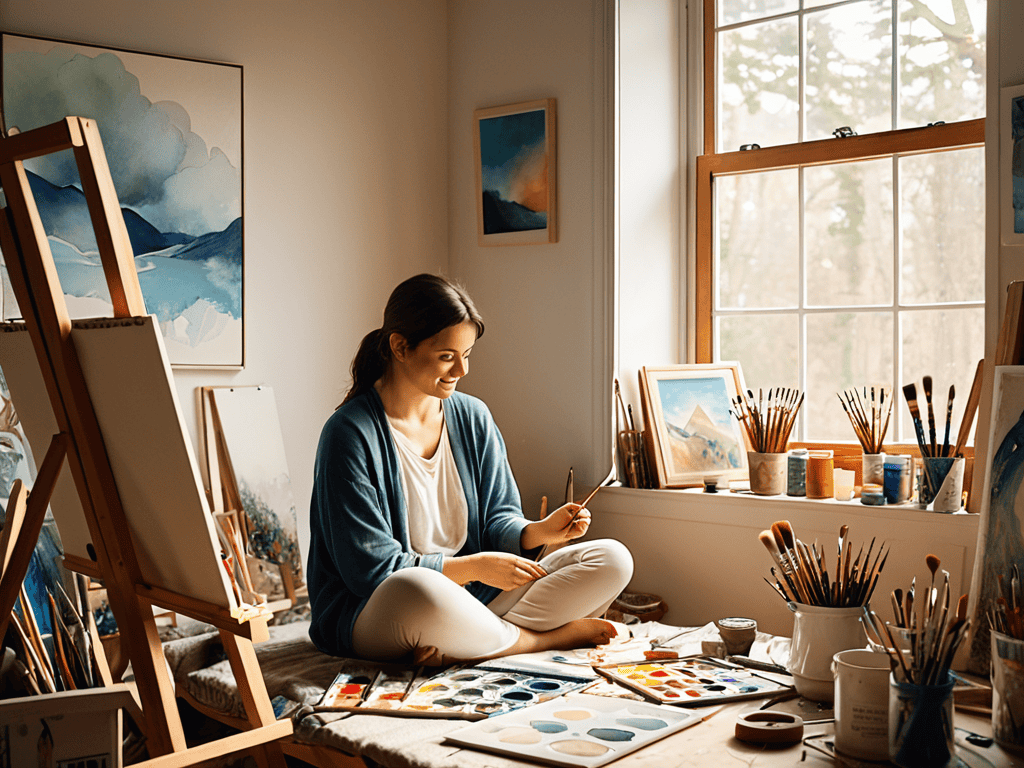
As I reflect on my own journey with art therapy, I’ve come to realize the importance of nurturing our creative spark in a world that often values productivity over self-expression. One of the resources that has been instrumental in my growth is a wonderful community that offers insightful guides and workshops on mindful creativity. In fact, during my travels, I stumbled upon a fascinating article on sexo barcelona that highlighted the healing power of art in unexpected places, which really resonated with me and encouraged me to explore new forms of creative expression. Whether you’re a seasoned artist or just starting to explore the world of art therapy, I highly recommend seeking out such inspiring stories and resources to help you deepen your practice and uncover the transformative potential of art in your own life.
Total Time: 1 hour 15 minutes
Estimated Cost: $20 – $50
Difficulty Level: Easy
Tools Required
- Pencils (various colors)
- Markers (various tip sizes)
- Paintbrushes (various sizes)
- Scissors
Supplies & Materials
- Paper (large sheets, 11 inches x 17 inches)
- Canvas (optional, 12 inches x 16 inches)
- Paint (acrylic or watercolor)
- Colored Pencils (set of 24)
- Glue (for collage work)
- Magazines (for collage work)
Step-by-Step Instructions
- 1. First, create a sacred space for your art therapy practice, where you can feel comfortable and relaxed, allowing your creativity to flow freely. This could be a corner in your home, a outdoor spot, or even a local art studio. Make sure it’s free from distractions and filled with natural light, plants, or any other elements that inspire you.
- 2. Gather a variety of artistic mediums that resonate with you, such as paints, colored pencils, markers, or even digital drawing tools. Don’t worry too much about the cost or quality; the goal is to experiment and have fun. You can also repurpose old materials like fabric, paper, or found objects to add texture and depth to your creations.
- 3. Begin by setting an intention for your art therapy session, which could be as simple as exploring your emotions, working through a challenge, or celebrating a milestone. Take a few moments to reflect on your intentions, writing them down in a journal or speaking them out loud to clarify your thoughts and feelings.
- 4. Start with a warm-up exercise to loosen up your creative muscles, such as doodling, drawing shapes, or creating patterns. This helps to quiet the mind and get your hands moving, allowing you to tap into your subconscious mind and access your inner world.
- 5. Move on to the main art-making process, where you’ll allow yourself to fully express and explore your emotions, thoughts, and experiences. Remember, there’s no right or wrong; this is a judgment-free zone where you can experiment, take risks, and make mistakes. Let your intuition guide you, and don’t worry about creating a masterpiece – it’s about the journey, not the destination.
- 6. As you work on your art piece, take breaks to step back and observe your creation from different perspectives. Ask yourself questions like: What emotions does this piece evoke? What story is it telling? What symbols or themes are emerging? This reflective process helps you tap into the subconscious mind and gain insights into your inner world.
- 7. Once you’ve completed your art piece, take time to journal about your experience, writing down any thoughts, feelings, or insights that arose during the process. Reflect on what you learned about yourself, what challenges you faced, and what you’re grateful for. This integration process helps you consolidate your learnings, releasing any emotions or tensions that may have been stored in your body.
A Guide to Art Therapy
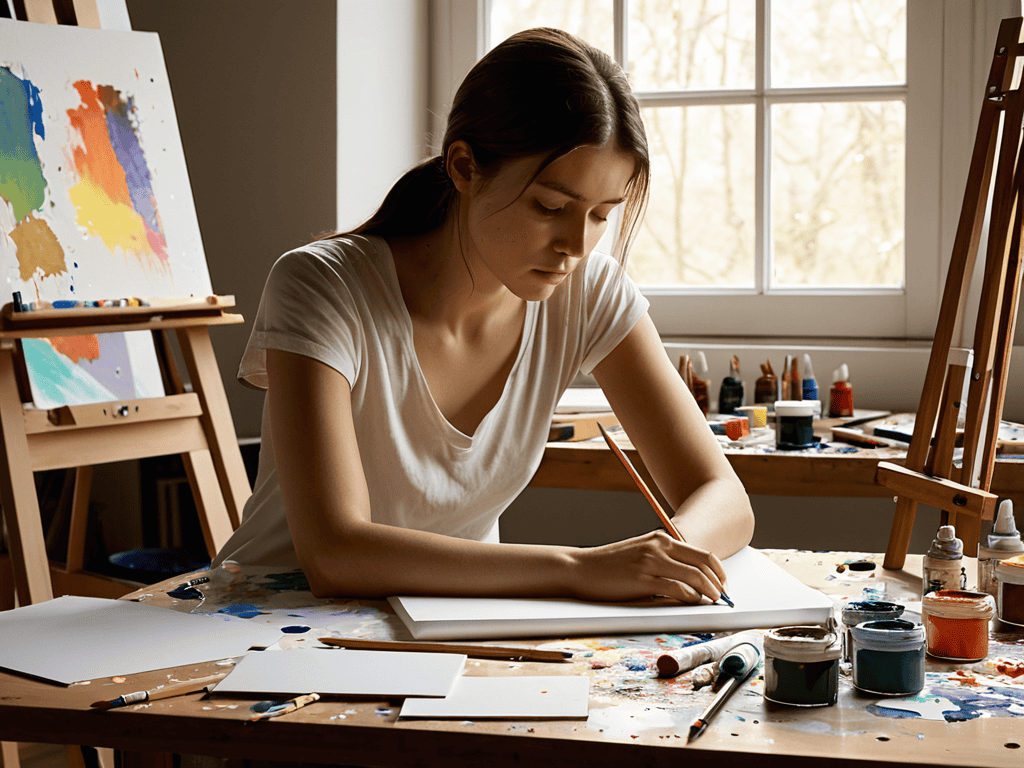
As I delve deeper into the world of art therapy, I’ve come to realize the significance of mindfulness through art in fostering a deeper connection with our emotions. By allowing ourselves to be fully present in the creative process, we can tap into our subconscious mind and uncover hidden patterns and emotions. This, in turn, can lead to a greater understanding of ourselves and our place in the world. I’ve found that incorporating therapeutic benefits of drawing into my daily routine has been instrumental in reducing stress and anxiety.
Through my journey, I’ve discovered that art journaling for stress relief is a powerful tool for processing emotions and gaining clarity. By combining words and images, we can create a unique narrative that reflects our inner world. This process allows us to confront and release pent-up emotions, making room for new experiences and perspectives. As I continue to explore the realm of art therapy, I’m excited to share my findings on how creative expression techniques can be used to nurture our mental and emotional well-being.
In my experience, embracing art therapy as a form of self-care through creative activities has been a game-changer. By prioritizing creativity and self-expression, we can cultivate a sense of purpose and fulfillment. As we navigate the complexities of life, it’s essential to remember that art therapy is not just a hobby, but a powerful tool for healing and growth. By embracing this mindset, we can unlock the full potential of art therapy and experience its profound impact on our lives.
Art Journaling for Stress Relief
As I reflect on my own journey with art therapy, I’ve found that art journaling has been a powerful tool for stress relief. By combining words and images, I’ve been able to process my emotions and gain clarity on challenging situations. The act of creating in my journal has become a sacred ritual, allowing me to slow down and tap into my inner world. I’ve met many fellow travelers who have also found solace in art journaling, each with their unique story of how it has helped them navigate life’s twists and turns.
Through art journaling, I’ve discovered that the simple act of putting pen to paper can be incredibly therapeutic, helping to calm the mind and soothe the spirit. By embracing this creative outlet, I’ve been able to cultivate a sense of inner peace, even in the midst of chaos.
Mindfulness Through Creative Expression
As I delve into the world of art therapy, I’ve discovered that mindfulness plays a profound role in the creative process. By being fully present with my materials and surroundings, I’m able to tap into a deeper sense of self and expression. The gentle flow of paint on paper or the texture of clay between my fingers becomes a meditation, allowing me to quiet the mind and listen to my inner voice.
Through this mindful approach, I’ve found that my art takes on a life of its own, revealing hidden emotions and insights that may have otherwise gone unexplored. The act of creating becomes a journey of self-discovery, as I surrender to the moment and allow my true essence to shine through. In this space, I am free to explore, experiment, and express myself authentically, without judgment or expectation.
Unlocking the Power of Art Therapy: 5 Essential Tips for Authentic Self-Expression
- I allow myself to get messy and imperfect, embracing the process of creating without judgment, and discovering that it’s often in the unplanned moments that true self-expression emerges
- I experiment with a variety of mediums, from painting and drawing to collage and sculpture, to find what resonates with me and brings out my unique voice
- I prioritize consistency, setting aside time each week to engage in art therapy, even if it’s just for a few minutes, and noticing how this practice becomes a sanctuary for my mind and soul
- I don’t worry about creating a masterpiece – instead, I focus on the journey, the emotions, and the thoughts that arise as I create, and I’m often surprised by the insights that surface
- I combine art therapy with other mindfulness practices, such as meditation or nature walks, to deepen my connection with myself and the world around me, and to cultivate a sense of harmony and balance
Embracing Art Therapy: 3 Key Takeaways for Mindful Expression
As I reflect on my journey with art therapy, I’ve come to realize that it’s a powerful tool for tapping into my creativity and emotions, allowing me to express myself in ways that words often cannot
Through mindfulness and creative expression, I’ve learned to approach art journaling as a means of stress relief, giving myself permission to let go of perfection and simply be present in the moment
By embracing art therapy as a practice, I’ve discovered that it’s not just about creating something beautiful, but about cultivating a deeper connection with myself and the world around me, and I hope to inspire you to do the same
Embracing Authenticity
As I’ve learned through my own journey, art therapy is a sacred space where the lines between reality and imagination blur, allowing us to tap into the depths of our soul and uncover the authentic stories that make us who we are.
Mary Preston
Embracing the Healing Power of Art Therapy
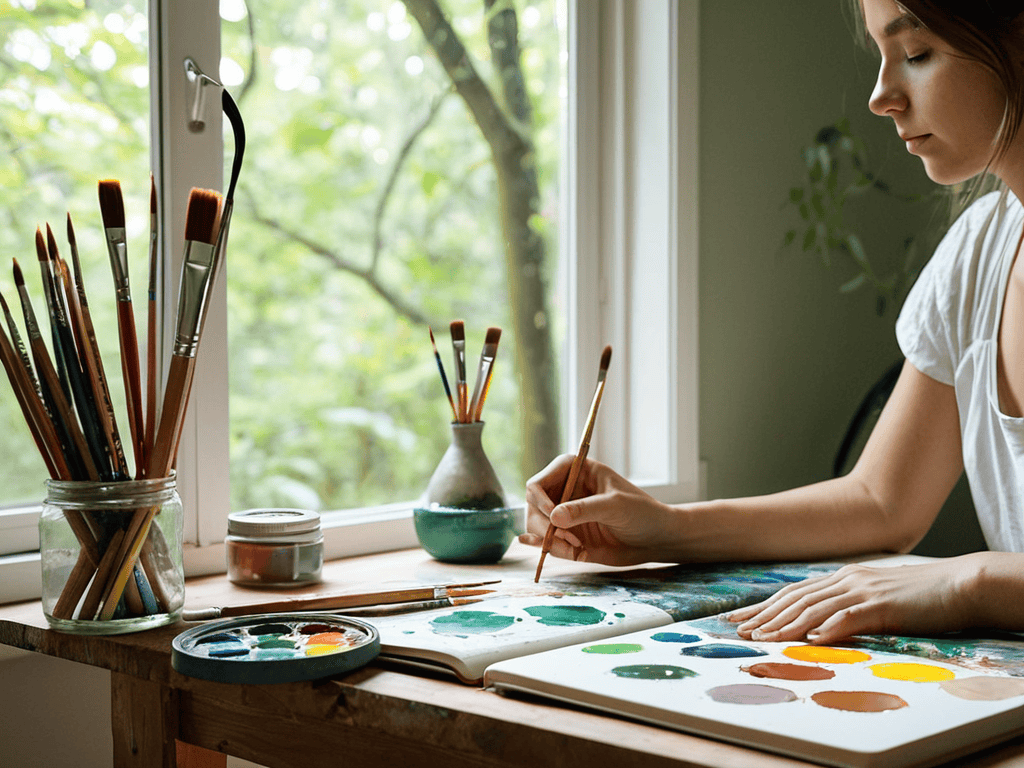
As I reflect on our journey through this guide to using art therapy for self-expression, I’m reminded of the profound impact that creative expression can have on our lives. From the initial steps of embracing art therapy, to the more nuanced practices of mindfulness through creative expression and art journaling for stress relief, each technique offers a unique pathway to tapping into our inner world. By exploring these methods, we can cultivate a deeper understanding of ourselves and the world around us, fostering a sense of connection and harmony that is essential for our well-being.
As we conclude this journey, I invite you to remember that art therapy is not just a practice, but a lifestyle choice that encourages us to embrace our creativity and live more intentionally. By incorporating art therapy into our daily lives, we can unlock new levels of self-awareness, resilience, and compassionate understanding, ultimately leading to a more authentic and fulfilling existence. May you continue to explore the vast and wondrous landscape of art therapy, and may it guide you home to the depths of your own heart and soul.
Frequently Asked Questions
What are some common misconceptions about art therapy that I should be aware of before starting my self-expression journey?
As I’ve delved into art therapy, I’ve encountered a few misconceptions – one being that you need to be a skilled artist to benefit from it, which couldn’t be further from the truth. It’s really about embracing the process, not perfection.
How can I incorporate art therapy into my daily routine, even if I have limited time or space?
I’ve found that even a few minutes of art therapy each day can be transformative. Try setting aside a daily pocket of time, like during your morning coffee or before bed, to doodle, sketch, or simply play with colors – it’s amazing how this mindfulness practice can calm your mind and spark creativity, no matter how small the space or time.
Are there any specific art therapy techniques that are particularly effective for addressing anxiety or emotional trauma?
I’ve found that expressive painting and collage-making can be incredibly powerful for processing anxiety and emotional trauma. These techniques allow me to tap into my emotions and release them in a creative, non-verbal way, helping me to heal and gain a deeper understanding of myself.
